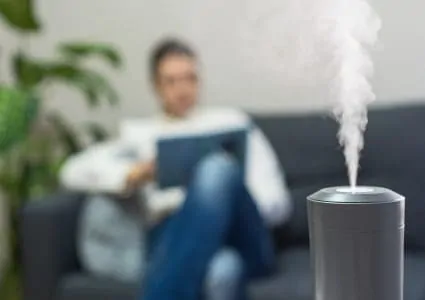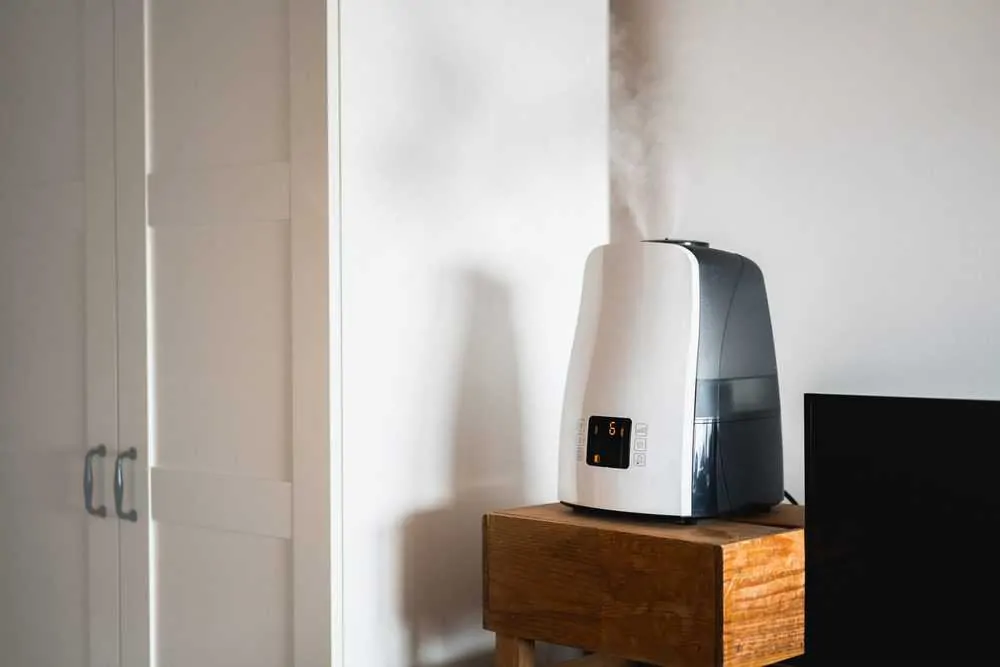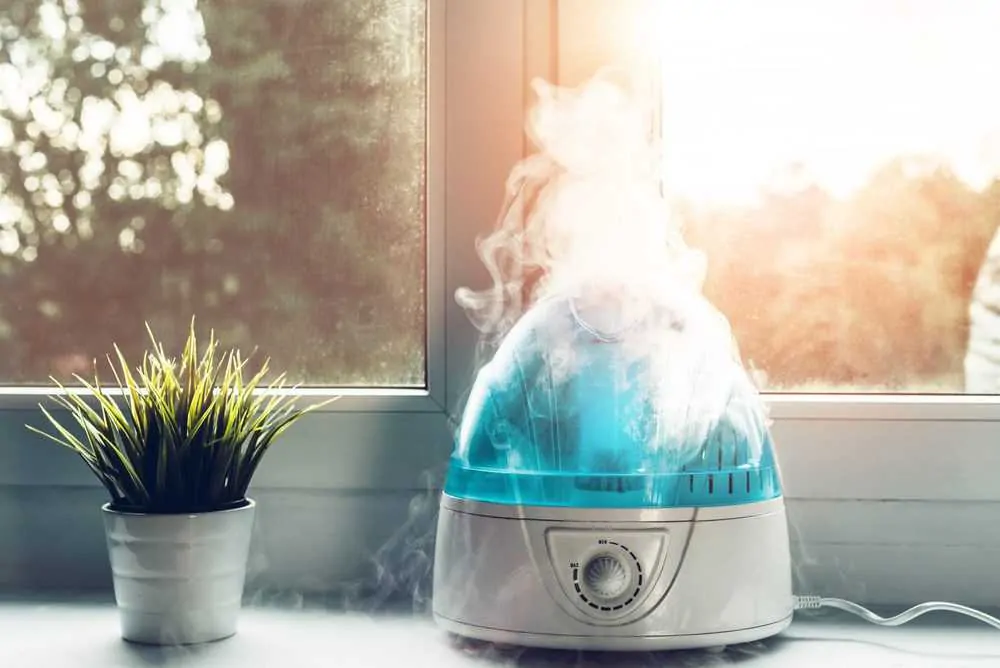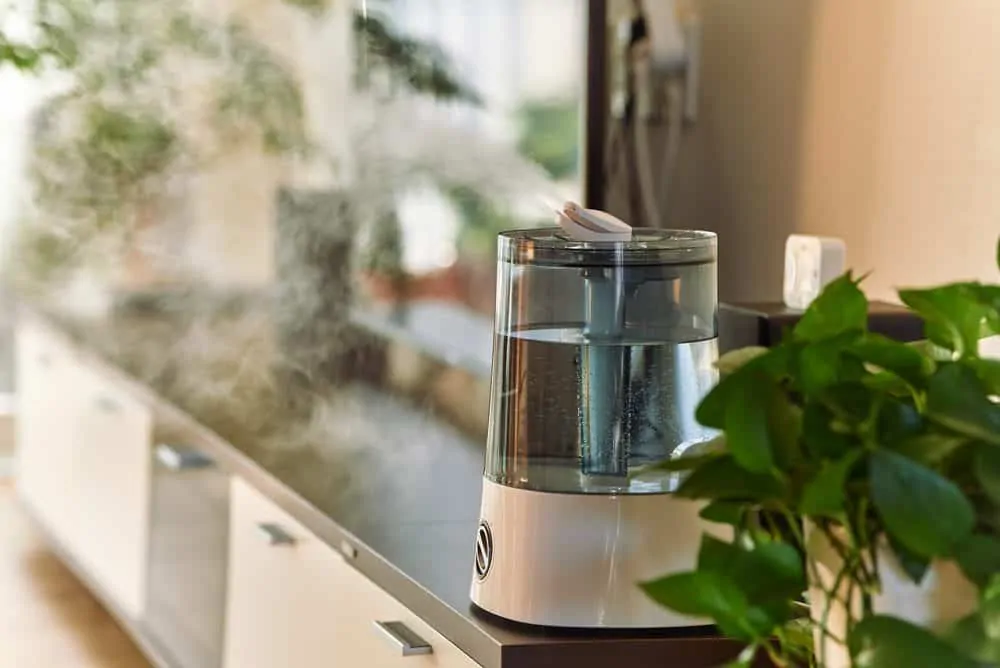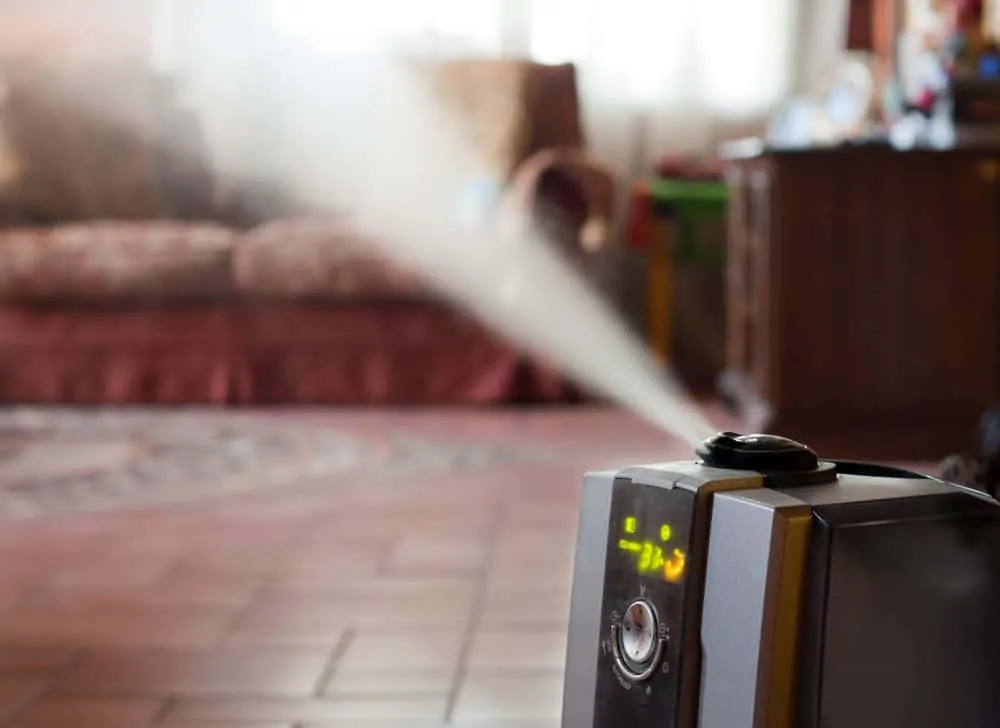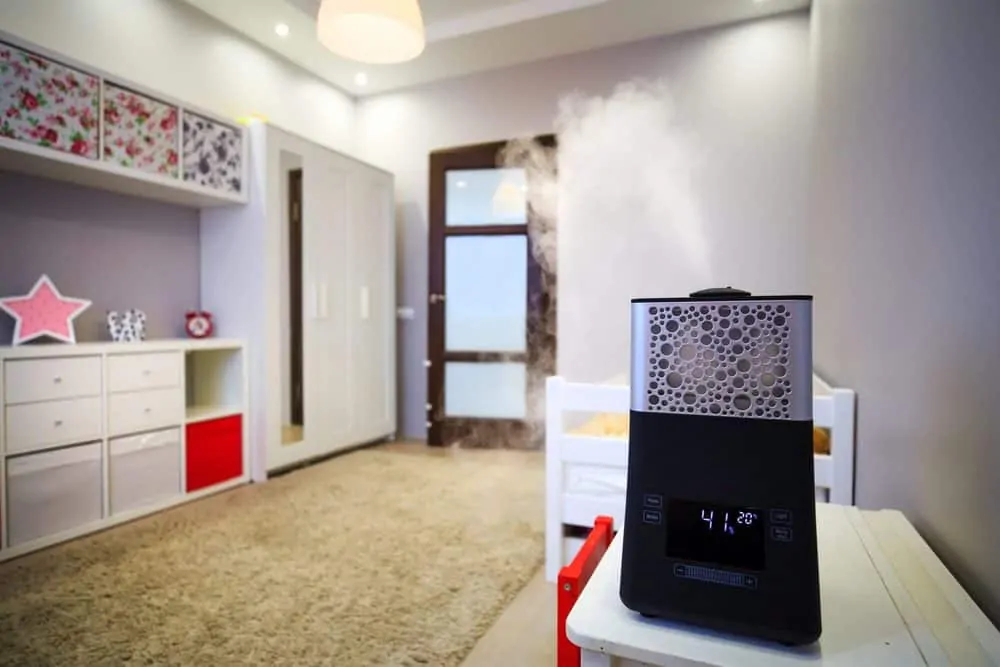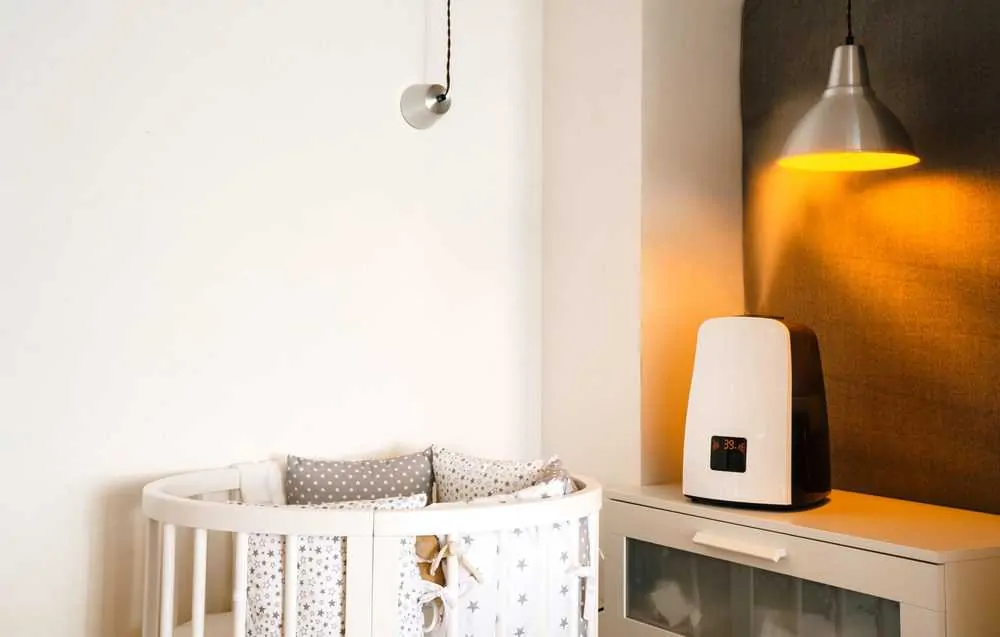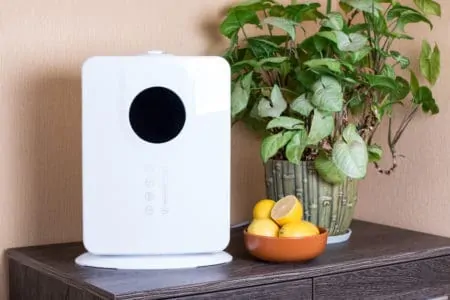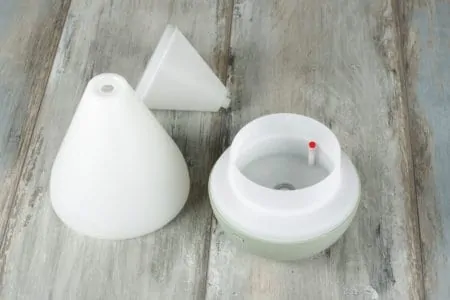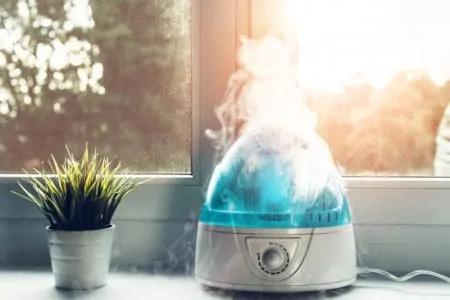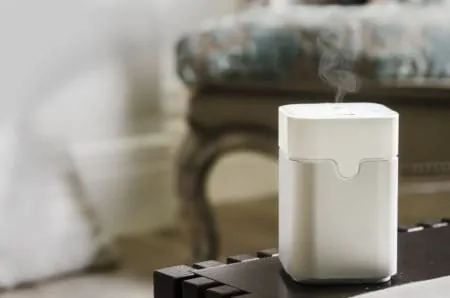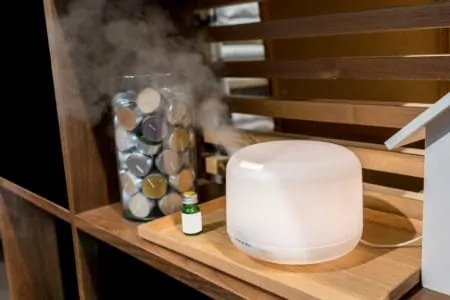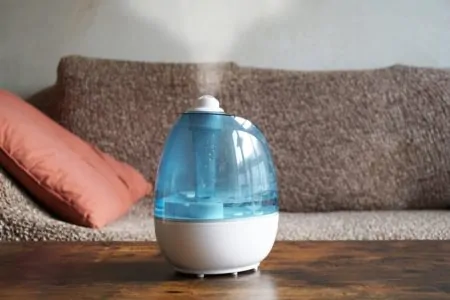Humidifiers have proven to significantly affect health and overall comfort (1). Still, unless you’re a humidifier expert, using such gadgets can seem confusing, especially regarding location. To reap the most benefits, the correct placement is key.
Knowing where to put your humidifier can be frustrating — should it be right on your nightstand? How close to the crib is safe for your baby? Where should it be in the living room?
Today, we’re answering your queries by guiding you from room to room.
Key Takeaways
- Place humidifiers where humidity is lowest, using a hygrometer to measure levels.
- Keep large models at least 3 feet from beds, elevated if possible, and avoid warm-mist types in children’s rooms.
- In living rooms, avoid water-sensitive areas, radiators, vents, and ensure proper room size for the humidifier.
- Maintain indoor humidity between 30-50% to avoid mold and use distilled water for safe operation.
Humidifier Placement in the Bedroom
Before we go any further and set up your humidifier, we recommend that you use a hygrometer. This neat device will tell you how much humidity there is in your bedroom air.
You’re likely to see that there’s more in some areas than others. If so, place your humidifier in the spot with the least amount of humidity. This step isn’t crucial, but it will help you to find the perfect spot.
Exactly where your humidifier should be located depends on how many people sleep in the room and the size of your unit. If more people share the space, you should use a large humidifier.
For large models, the best place is in a corner, three or more feet away from the bed.
Are you sitting down? This is where it can get confusing. Where to put your humidifier also comes down to the type.
Here are a few examples:
Warm-Mist Humidifier Placement
Warm-mist humidifiers are fantastic if you have a cold, are suffering from allergies, or usually feel congested. However, you need to be careful.
This type shouldn’t be near your bed while you’re sleeping in case of burns. Place it in the corner or at least a few feet away from you. During the day, you can have it on the nightstand to moisten up the air before bedtime.
Take Caution
Cool-Mist Humidifiers in the Bedroom
Cool-mist humidifiers work differently, so they’re considered safer than warm-mist ones. Because of this, you can safely place them near your bed when you have a cold or an allergy flare-up. On regular days, set it at least three feet away while sleeping.
Another thing to remember is that you should leave a gap between the wall and the device. Some models require a specific amount of circulation to function correctly. By placing it flat against the wall, you’re hindering this.
Where Should I Put the Humidifier in a Living Room?
A humidifier in the living room is an excellent way for everyone to benefit. You don’t have to worry about the placement since everyone is awake and alert. Still, there are some spots you should aim for.
Where’s the Best Spot?
The best place is where it’s needed the most. To find that spot, we recommend you pull out the hygrometer again.
Then, seek out a place that isn’t susceptible to water damage. Keep it away from wooden furniture, technology, and electrical sockets.
Take Into Account Room Size
You should also consider the size of your room and the humidifier. Having a large humidifier in a small living room isn’t ideal.
The device will produce too much mist, creating a moist environment. This can eventually lead to mold and mildew.
Over time, living in such an environment can make you sick, especially if you already suffer from allergies (3). In medium or large rooms, you can place the humidifier almost anywhere. The machine will work to distribute the vapors evenly, thus maintaining the right level of humidity.
Avoid Radiators and Vents
A final thing to keep in mind is to avoid having the humidifier near a radiator or vent. Placing the machine near a heat source can meddle with the humidity readings. So, if your humidifier has a built-in hygrometer, it will produce a lower result due to the low-humidity air coming from the vent.
Due to the low reading, the machine will run much higher to compensate, creating more mist than needed. Thus, it’s best to place it centrally.
Should the Humidifier Be on a Table or the Floor?
This depends on different situations. It’s not best to place large humidifiers on a table or stand, especially if you have pets or small children who could pull them down.
Still, it isn’t that straightforward. If placing it on the floor, make sure you have a protective layer between the machine and the surface. This could be a tray or water-resistant material that will catch droplets and spills, saving your carpet or flooring.
If you have pets, or crawling babies, keep the humidifier where they can’t reach. Make sure they can’t accidentally push buttons or, in other ways, alter your settings.
However, have the device elevated whenever possible—this ensures even mist distribution.
For cool-mist humidifiers, in particular, try to place them as high as possible. The droplets coming from the device require time to blend with the atmosphere. If it stands on the floor, they’re likely to drop without evaporating properly.
If you don’t have a table suited for a humidifier, you can invest in a small plastic table. Or, use a towel or cloth underneath the machine.
Be Mindful
Placement in the Bathroom
Having a humidifier in the bathroom isn’t always necessary. The idea behind these machines is to restore moisture in a room with dry air. In the bathroom, however, the air generally contains enough moisture due to the water-rich environment.
With that said, a humidifier can improve the air if you have a large bathroom or are suffering from a cold. The same rules as above apply. Use a hygrometer to check the humidity and place the machine accordingly.
Avoid turning the humidifier on after showers or baths. You don’t want to create excessive vapor, which could lead to mold or mildew. Also, ensure you vent the bathroom afterward to avoid accumulating harmful mold (4).
Placement in the Kids’ Room
Using a humidifier in your child’s bedroom is a fantastic way of keeping dry skin, airborne viruses, and allergens at bay. Before you place it, consider how many children sleep in the room and how big the machine is.
Larger rooms with more kids require a bigger humidifier and vice versa. Again, utilize the hygrometer to find the perfect spot — just be sure to keep it at least three feet away from the beds. Also, try to find a place high up so they can’t tip it over or meddle with the settings.
For Cool-Mist Humidifiers Only
Placement in the Nursery
Humidifiers have the same benefit for babies as they do for children and adults. Again, with the nursery, find the spot where moisture is needed.
Avoid placing it on the nightstand near the crib if your baby is older. When they wake up during the night, they may knock it down or even pull it into the crib. If you have a dresser opposite the bed, then that’s perfect.
Once you turn on the machine, leave the door ajar. Otherwise, the air might become too moist, creating a damp environment, which isn’t good for your baby (6).
One last tip would be to choose a quiet humidifier for the nursery. Most models hum or make noise, but some make loud gulping or gurgling sounds. These could wake your baby up.
Dangerous Places for Humidifiers and Additional Tips
There are many good spots for humidifiers, but there are also bad ones. Here are some places to avoid:
- Near electrical outlets: Because of the mechanism of humidifiers, placing them near an electrical outlet can lead to rust or short circuits. Water can potentially leak and cause issues with the electrical system of your home.
- Away from technology: Avoid spots near things like TVs and computers. Droplets or spills can ruin such items or start electrical fires.
- Away from direct sunlight: Never leave your humidifier by the window. With sun exposure, the water inside can produce bacteria, which the machine vaporizes for you to inhale. This can lead to respiratory issues, if not life-threatening, conditions for people with asthma or allergies.
- Off carpets: Placing your humidifier directly onto your carpet can not only ruin it, but it can also lead to mold. Always place a plastic tray or other material underneath to protect the surface.
- Relatively easy-to-access place: Don’t put the humidifier in a spot where you may forget about it, or that it’s difficult to access. You want a place where you can attend to it if service or cleaning is necessary. Also, in the case of overheating, you must be able to access it to turn it off.
- Do frequent cleaning: If you place the humidifier near your bed while you’re sleeping, clean it regularly. Standing water is the perfect environment for bacteria growth. If the water isn’t clean, you’ll be breathing in the harmful matter (7).
- Be mindful of indoor humidity: Because we hear so much about the benefits of a humidifier, we forget to be cautious. One mistake many of us make is to over-moisten indoor air by running the device continuously. Keep indoor humidity at 30 to 50 percent (8).
FAQs
Make the Humidifier Work for You
Using a humidifier is excellent for reducing airborne viruses and allergens. It may also help relieve dry skin and congestion during a cold or allergy flare-ups. However, for best results, knowing where to put your humidifier is essential.
One general rule is to place it where it’s needed. By using a hygrometer, you can check where the air lacks humidity and then place your machine accordingly.
Still, avoid keeping it close when you sleep, and try to have it elevated on a table, three feet from your bed. Always use a cool-mist humidifier for the children’s bedroom or nursery to prevent potential hazards.
